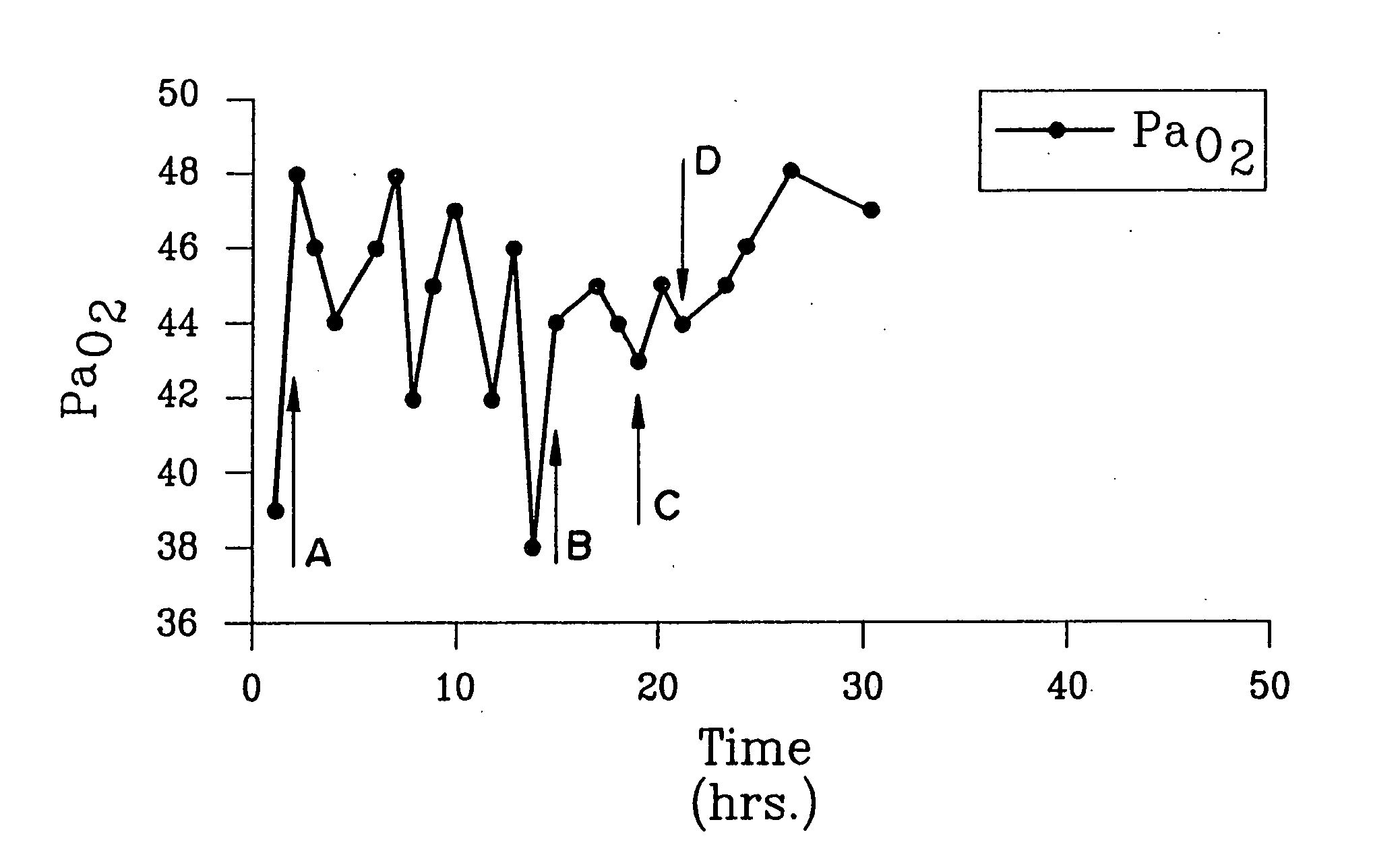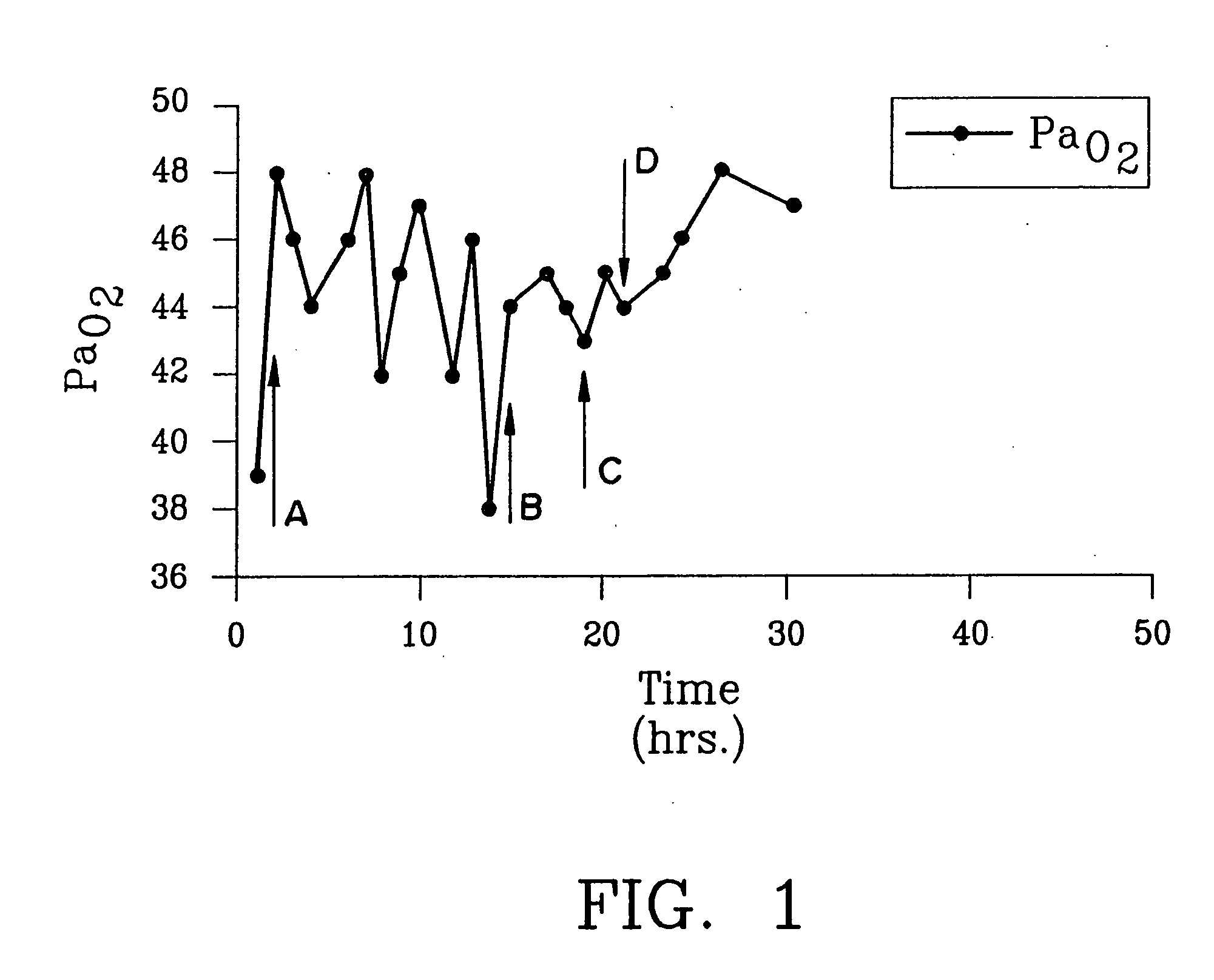Treating pulmonary disorders with gaseous agent causing repletion of GSNO
a gaseous agent and pulmonary disorder technology, applied in the field of lung disorders, can solve the problems of affecting the oxygenation of the lung, the inability to improve the oxygenation of the air sac, and the inability to improve the oxygenation of the blood vessel, so as to reduce the h2o2 in expired breadth, reduce the thiobarbituric acid derivative, and reduce the effect of carbon monoxid
- Summary
- Abstract
- Description
- Claims
- Application Information
AI Technical Summary
Benefits of technology
Problems solved by technology
Method used
Image
Examples
example i
[0041] A 63-year-old white male with primary pulmonary hypertension is treated with inhaled NOCl at 10 parts / million in nitrogen. Pulmonary systolic pressure drops from 40 to 30 mm Hg and the PaO2 increases from 56 to 72 mm Hg.
example ii
[0042] A 25-year-old white female with ARDS secondary to urosepsis is intubated with a PaO2 of 14 mm Hg. She is given NOCN in nitrogen at 20 parts per million and the PaO2 increases to 60.
example iii
[0043] A 6-year-old boy presents in status astmtaticus. His PO2 is 64 mm Hg and he is intubated. Efforts to ventilate are complicated by a pneumothorax. He is started on 20 ppm methylnitrososulfinate in nitrogen and airway pressures decrease.
PUM
| Property | Measurement | Unit |
|---|---|---|
| pressure | aaaaa | aaaaa |
| flow rate | aaaaa | aaaaa |
| flow rate | aaaaa | aaaaa |
Abstract
Description
Claims
Application Information
 Login to View More
Login to View More - R&D
- Intellectual Property
- Life Sciences
- Materials
- Tech Scout
- Unparalleled Data Quality
- Higher Quality Content
- 60% Fewer Hallucinations
Browse by: Latest US Patents, China's latest patents, Technical Efficacy Thesaurus, Application Domain, Technology Topic, Popular Technical Reports.
© 2025 PatSnap. All rights reserved.Legal|Privacy policy|Modern Slavery Act Transparency Statement|Sitemap|About US| Contact US: help@patsnap.com


